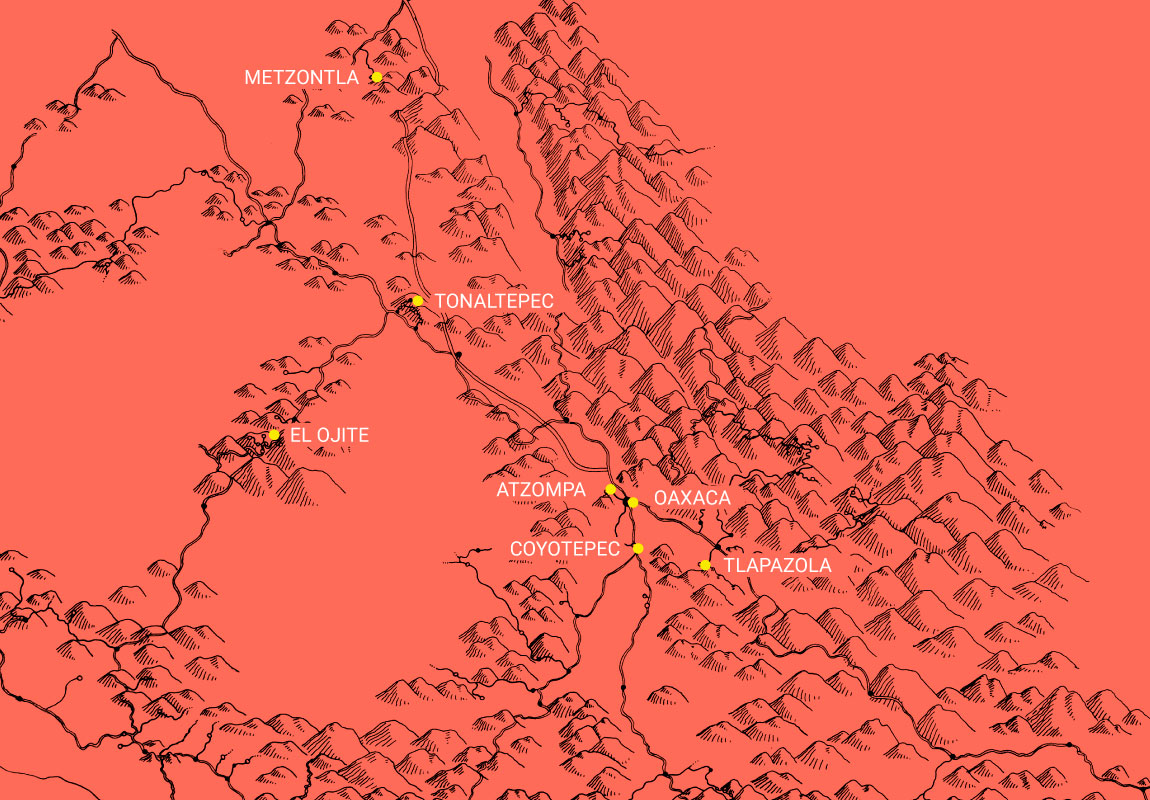pottery villages

"... But what is a pottery village? At one extreme they are thriving places like Atzompa, Coyotepec, and Yojuela where the villages’ economy rests on pottery production. At the other edge, things begin to crumble. In many villages there may be only twenty potters left in a village of a thousand, only five, or perhaps just one solitary soul, the last in a line of what used to be dozens, and she hardly makes pottery anymore. Yet because of her, and potters like her, these are villages where a clay tradition persists. And so, if a village has a deeply rooted tradition of making pottery and there are still potters there who have inherited this trade, I call it a pottery village.
More than seventy pottery villages, spread over forty thousand square miles and centuries of unwritten history. No one knows how many there once were or how many have disappeared with the changing tides. Did some pottery villages fade into oblivion as the ancient kingdoms began to decline and collapse 1500 years ago? More than likely the potters who made the ornate masterpieces we now see in museums lost their royal commissions. But kingdom or not, cookware was needed, and although archaeologists have a greater appetite for tombs than common household kitchens, there’s enough evidence to suggest that the potters who produced the everyday pottery continued to ply their craft.
And then came the Spanish invasion. Villages were relocated, many customs were violently repressed, and new beliefs imposed. As much as ninety-five percent of the population of the Americas died, mostly from diseases, in the first century after contact. Clearly, some pottery traditions were lost. But what is more amazing is that traditional pottery, along with a great diversity of native languages and customs, somehow survived the juggernaut.
Pottery villages evolved in response to basic needs for durable household vessels. In a society wholly dedicated to agriculture, farmers depended on a few artisans who possessed exceptional skills. In the blossoming days of specialization, certain families, neighborhoods, and entire villages began mastering and producing superb products that people were eager to barter for. Surrounded by clay-rich hills, the people of San Marcos Tlapazola learned how to work with the bounty nature provided. The process was far from automatic though. For some mysterious reason their neighbors in Quialana and Magdalena, living on the same slopes, ignored the clay at their feet. Whether by choice or the will of the gods, San Marcos became the place where pottery was made for the Valley of Tlacolula. And so it was for every village that grew to produce the pottery needed by the people in their region.
But pottery villages are not factory towns. Most are small hamlets rooted in corn farming. The potters work in their homes, and the creative process is often solitary. Paradoxically, though the work is done individually, the result is entirely collective. With few exceptions, all the potters in a village create identical pottery. From one household to the next they form, finish, and fire their pots in the exact same way.
Such communal enterprise probably began the first day someone started working with clay, and her sister gave it a try and then showed it to their mother, who shared it with an aunt. Certainly there have been times of intense experimentation when individual potters developed new styles or adapted their work to new techniques, new materials, or the changing demands of the regional market. A village is small and closely bound, and one person’s new idea becomes another person’s clever improvement. Such innovations would quickly spread through a village. However, they seldom found their way to other distant pottery villages, and so regional styles came into being.
Seldom doesn’t mean never. There was, and continues to be, an active network of trade that links the villages of central Mexico and beyond. Pottery and the potters who made it were part of this elaborate network. Inevitably there were occasions when ideas were shared via trade, intermarriage, or migrations. It is not hard to picture two potters from different villages sitting down before a lump of clay and going to work, comparing and contrasting each other’s methods. No doubt they laughed at the differences – certainly their own way was superior – but they also paid keen attention. In one way or another, over the centuries ideas spread from one pottery village to the next, sometimes accepted, other times rejected, and as a result we see the widespread use of similar techniques within certain regions, and even across cultural boundaries.
However, though some techniques may have been widely adopted, the same does not hold true for style. For example, in the coastal region of Oaxaca there are fourteen pottery villages spread over a two-hundred-kilometer stretch of land. All of these villages use the same technique, drape molding, to make their pots, but the look of the pottery is unique to each village. That look is the pot’s identity, and by extension, a piece of the potter’s identity. First and foremost, a potter, her pot, her language, and her identity are tied to her village. No sooner would she take the identity of a non-related village than would she offer hers. Village is clan, as close as a last name.
First and foremost, a potter, her pot, her language, and her identity are tied to her village."
Excerpt from the book Clay and Fire. The Art of Pottery in Oaxaca. Written by Eric Mindling and edited by Innovando la Tradición.
Villages
Santa Maria Atzompa
San Bartolo Coyotepec
San Marcos Tlapazola
Rio Blanco Tonaltepec
Tamazola
The Metzontla kings
Tavehua
Tlaxiaco
Tlatzala
Yojuela